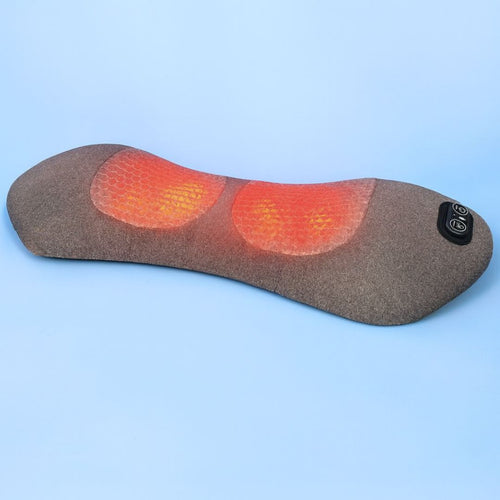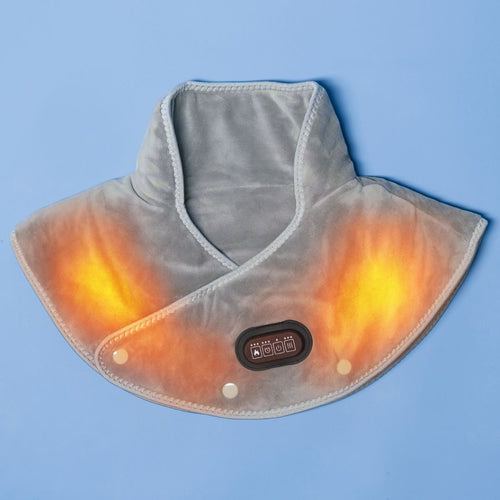Real Solutions on How to Sleep With Lower Back Pain
By Holly Grace Callis | Published on August 11t, 2025
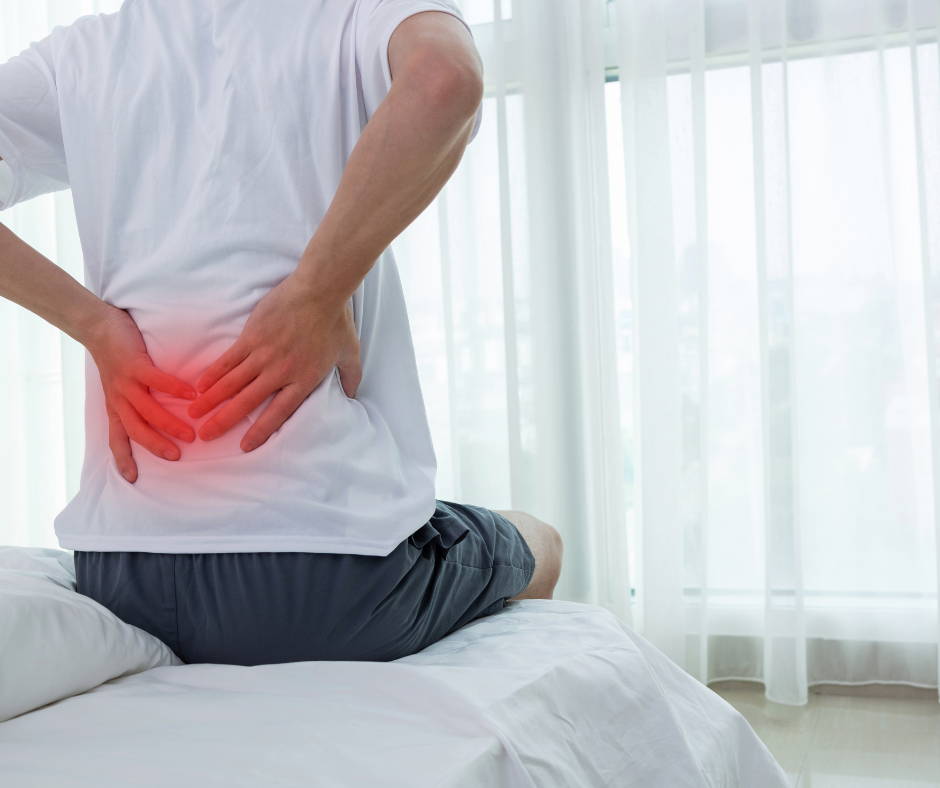
You dread bedtime because you know how hard it's going to be to get comfortable, and staying that way through the night feels even more impossible. Poor sleep position doesn't just keep you up; it can make your lower back pain feel significantly worse.
According to a study from PubMed, up to 84% of people with chronic low back pain reported sleep disturbances due to pain. That means if your back pain is affecting your sleep, you're far from alone, and fixing your sleep setup can bring serious relief.
In this post, you'll learn expert-backed sleep positions and alignment tips that support your back, plus two sleep tools designed to improve comfort and alignment overnight.
Why Sleep Position Matters for Lower Back Pain
Your spine doesn't take a break when you sleep. The position you maintain for 7-8 hours each night has a profound impact on how your back feels when you wake up and throughout the following day.
Your Spine Needs Neutral Alignment
When you sleep, your spine should maintain its natural curves without excessive sagging or twisting. Good sleep positioning preserves these curves instead of flattening or exaggerating them.
Poor alignment during sleep puts stress on the discs, joints, and muscles of your lower back. Over time, this stress can contribute to inflammation, muscle tension, and increased pain sensitivity. What starts as a minor ache can become a persistent problem if your sleep position consistently works against your spine's natural structure.
Nighttime Recovery Depends on Proper Support
Sleep is when your body does its most important repair work. Your muscles relax, inflammation decreases, and tissues have a chance to heal from the day's activities. But if your spine is under stress all night, this recovery process gets disrupted.
When your lower back is properly supported during sleep, your muscles can fully relax. Blood flow improves, which helps deliver nutrients to healing tissues and remove waste products that contribute to pain and stiffness.
Morning Stiffness Tells a Story
If you wake up feeling stiff and sore, your sleep position likely played a role. Morning stiffness that improves as you move around usually indicates that your spine was held in a compromised position overnight.
Best Sleep Positions to Support Your Lower Back
Not all sleep positions are created equal when it comes to lower back pain. Some positions naturally support your spine's alignment, while others put unnecessary stress on sensitive structures.
1. Back Sleeping With Knee Support
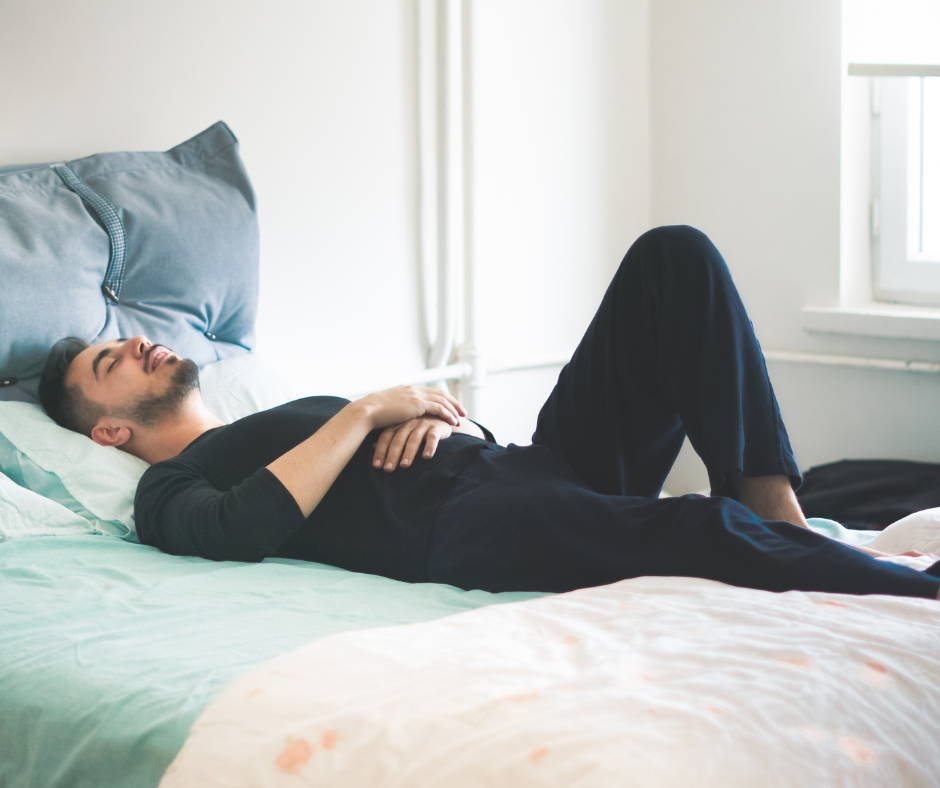
Back sleeping is often considered the gold standard for spinal alignment because it allows your spine to maintain its natural curves without twisting or bending.
How To Do It Right
Lie on your back with a pillow under your knees. The pillow should lift your knees slightly, which reduces the arch in your lower back and takes pressure off your lumbar spine. Your head should be supported by a pillow that keeps your neck in a neutral position.
Why It Works
When your knees are elevated, your hip flexors relax, which reduces the pull on your lower back. This position distributes your body weight evenly across your spine and allows your back muscles to fully relax.
Use a contour pillow for your head and neck to maintain proper alignment from your skull to your tailbone. The Thera Pillow is designed specifically to support the natural curve of your neck while keeping your head in line with your spine.
2. Side Sleeping With a Pillow Between Knees
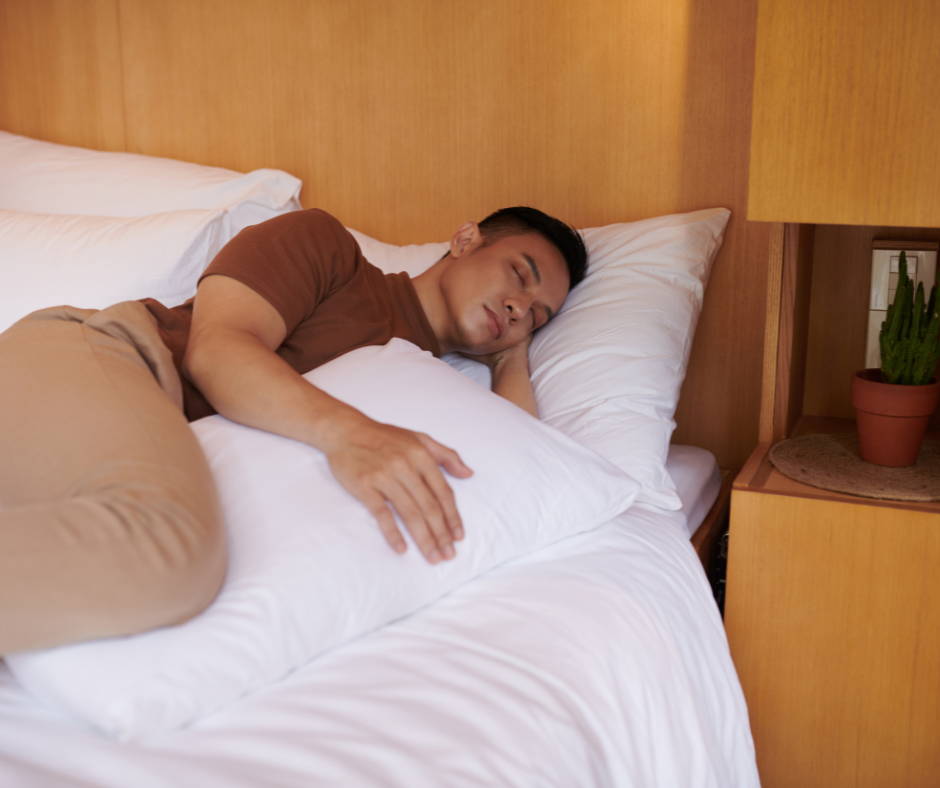
Side sleeping can be excellent for lower back pain when done correctly. The key is maintaining alignment of your hips, spine, and pelvis.
How To Do It Right
Lie on your side with your knees slightly bent. Place a pillow between your knees and, if needed, between your ankles. Your head pillow should fill the space between your shoulder and neck completely.
Why It Works
The pillow between your knees prevents your top leg from pulling your spine out of alignment. Without this support, your top leg tends to fall forward, rotating your pelvis and creating a twist in your lower back.
The knee pillow should be thick enough to keep your legs parallel, but not so thick that it pushes your top leg too high.
3. Fetal Position For Sciatica Or Disc Pain
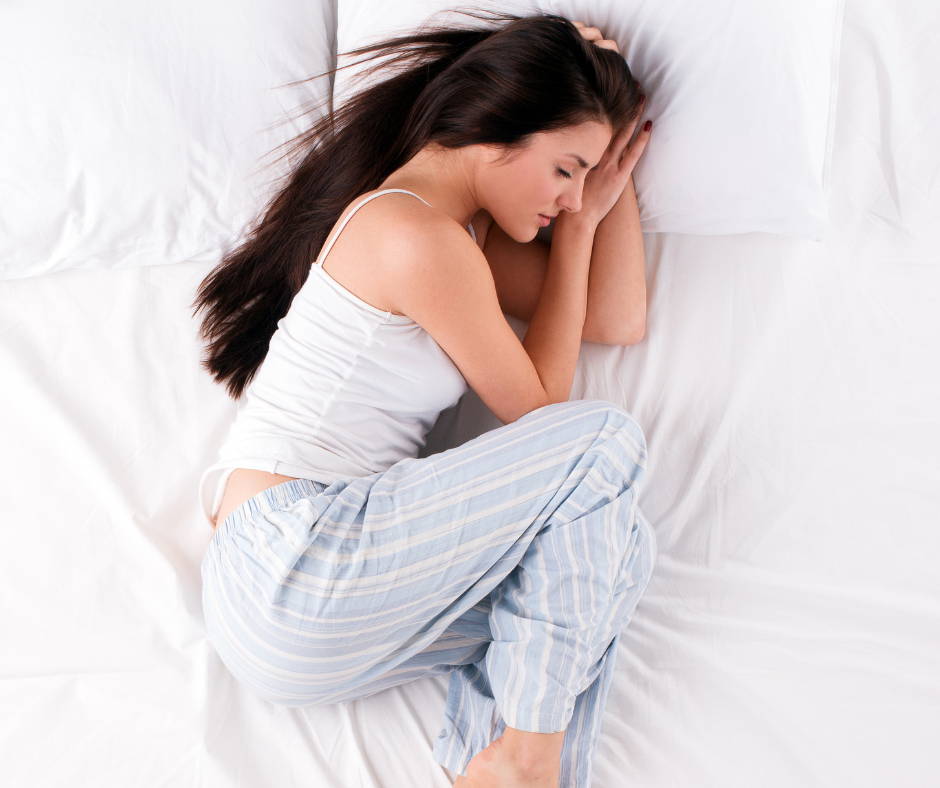
A modified fetal position can provide significant relief for certain types of lower back pain, particularly conditions involving nerve compression or disc problems.
How To Do It Right
Lie on your side and draw your knees toward your chest, but don't curl up as tightly as a baby. You want a gentle curve that opens up the spaces between your vertebrae without creating excessive rounding in your spine.
Why It Works
This position slightly flexes your spine, which can relieve pressure on compressed nerves and reduce stress on bulging or herniated discs. It's particularly helpful for people with spinal stenosis or sciatica.
The fetal position is often most helpful during acute flare-ups of lower back pain. As your pain improves, you might find back sleeping or straight side sleeping more comfortable for long-term use.
4. Avoid Sleeping on Your Stomach
Stomach sleeping is problematic for most people with lower back pain because it forces your spine into an unnatural position.
When you sleep on your stomach, your lower back often sags into excessive extension, which compresses the joints and discs in your lumbar spine. Additionally, you have to turn your head to one side to breathe, creating neck strain that can contribute to overall spinal tension.
If you're a habitual stomach sleeper, try using a body pillow to prevent yourself from rolling onto your stomach during the night.
Callixe Tools That Help You Sleep Better
While proper sleep positioning is the foundation of back-friendly sleep, the right supportive tools can make maintaining good alignment much easier and more comfortable.
Thera Pillow for Neck and Spinal Support
Your head and neck position affect your entire spine, including your lower back. When your neck is properly aligned, it reduces compensatory tension throughout your back.
The Thera Pillow is designed to maintain the natural curve of your neck, which helps keep your entire spine in proper alignment. This contour pillow works for both back and side sleepers, providing consistent support throughout the night.
The pillow's memory foam construction responds to your body heat and weight, creating custom support that adapts to your specific neck shape. This reduces pressure points that can cause you to toss and turn, helping you maintain good positioning all night long.
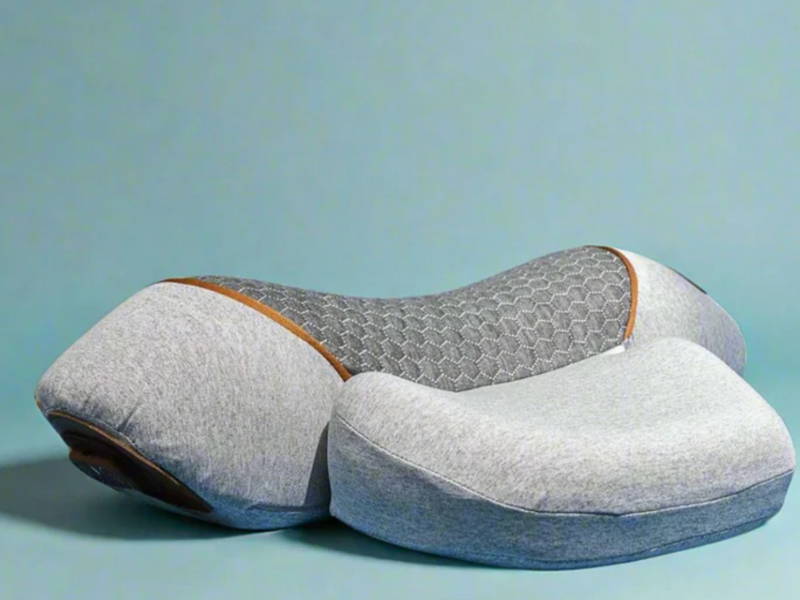
Thera Back Lumbar Cushion for Nighttime Positioning
Direct lumbar support can make a significant difference in your sleep comfort, especially if you're dealing with chronic lower back pain.
The Thera Back is designed to support the natural curve of your lower spine while you sleep. You can position it under your lower back when sleeping on your back, or between your side and the mattress when side sleeping.
Unlike bulky wedges or rigid supports, the Thera Back is designed to slip easily into place wherever you need extra support. When used together, the Thera Pillow and Thera Back create a complete support system that maintains spinal alignment from your head to your hips.
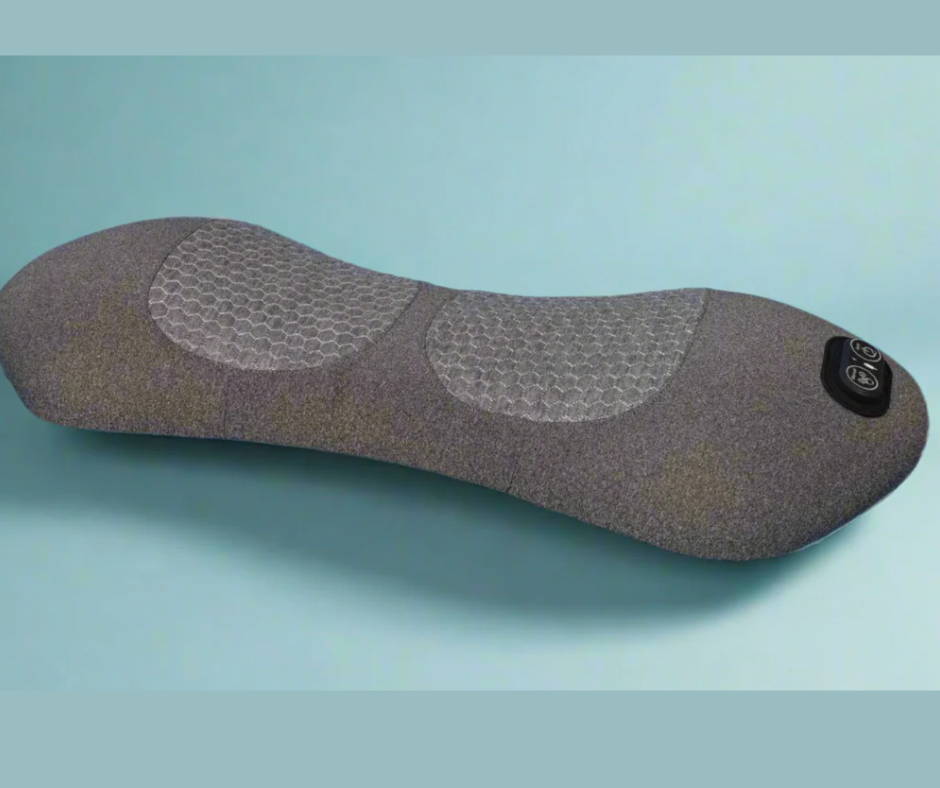
Tips to Improve Sleep Alignment
Beyond positioning and supportive tools, several other factors influence how well your back is supported during sleep.
Choose the Right Mattress Firmness
A medium-firm mattress typically provides the best balance of support and comfort for most people with lower back pain. It should support your body's natural curves without allowing excessive sinking or creating pressure points.
Create a Pre-Sleep Routine
Gentle stretching, particularly of your hip flexors and hamstrings, can help reduce tension that pulls on your lower back during sleep. Simple exercises like knee-to-chest stretches or gentle spinal twists can help release tension from the day.
Optimize Your Sleep Environment
Keep your bedroom cool, dark, and quiet to promote deeper, more restorative sleep. When you sleep more soundly, you're likely to move less and maintain better positioning throughout the night.
Give Your Body Time to Adjust
When you change your sleep position or start using new supportive tools, give your body several nights to adjust. You might feel awkward or uncomfortable at first, but most people adapt to better positioning within a week or two.
Sleep Better, Wake Up Stronger
Lower back pain doesn't have to steal your sleep. With the right positioning, supportive tools, and consistent habits, you can create a sleep environment that works with your body instead of against it.
Your spine needs proper support to heal and recover overnight. When you give it that support, you're improving your sleep and setting yourself up for better days ahead.
Ready to transform your nights and mornings? Explore Callixe's relaxation and pain relief tools.
FAQs About Sleeping With Lower Back Pain
What is the best sleeping position for lower back pain?
Back sleeping with knee support or side sleeping with a pillow between your knees are typically the top choices for relieving lumbar pressure. The best position for you depends on your specific type of back pain and personal comfort preferences.
Is it normal to wake up with lower back pain?
Yes, especially if your spine wasn't properly supported overnight. Morning back pain that improves as you move around usually indicates that your sleep position or mattress isn't providing adequate spinal support.
Can a firm mattress relieve lower back pain at night?
A medium-firm mattress is generally best for most people with lower back pain. It provides enough support to maintain spinal alignment without being so hard that it creates pressure points.
How do I know if my pillow or support cushion is working?
You should wake up with less pain or stiffness and feel supported without developing new soreness in your hips, shoulders, or neck. Pay attention to trends over several nights rather than expecting immediate, dramatic changes.
How long does it take to see improvement from better sleep positioning?
Many people notice some improvement in morning stiffness and comfort within a few nights of better sleep positioning. More significant changes in overall pain levels typically develop over 2-4 weeks as your body adapts to better spinal alignment.


